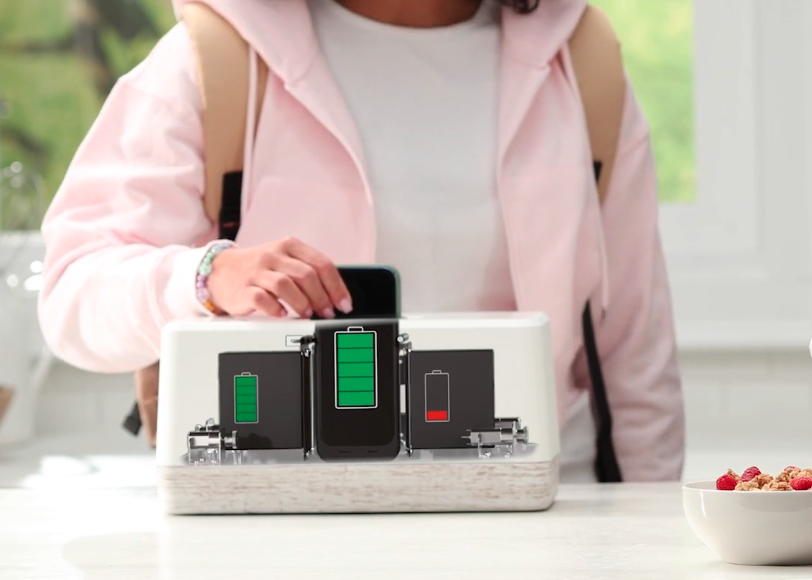One of the buzziest products at CES 2025 is far simpler than any massive, crisp-pictured TV or next-gen EV for street and sky. The all-new Swippitt IPS is a fast power-up solution for mobile phones. Forget handcuffing your iPhone to an electrical socket or wireless dock for the next two hours, simply drop it into the toaster-like Swippitt Hub and walk away with a fully charged battery in a matter of seconds.
Two-second charging sounds too good to be true because it is. Swippitt hasn’t managed to eradicate the concept of charging time with some type of mega-voltage miracle charger. Instead, it’s developed what it calls an Instant Power System (IPS), a simple but smart solution blending cutting-edge digital and more basic mechanical tech into a quick, convenient battery-swapping ecosystem.

Swippitt
That toaster-like desktop module is the Swippitt Hub, a multi-battery dock that stores and charges up to five individual 3,500-mAh battery packs at a time. Swippitt’s proprietary software manages all five batteries for optimized charging and power level maintenance.
The battery packs themselves aren’t make/model-specific internal phone batteries but compatible Swippitt Link add-on packs meant to serve as both a protective cases and phone life-doubling supplementary batteries. Pop the phone into the Hub slot and the Hub knocks off the original Link case and replaces it with a fully charged one via an internal conveyer system, automatically starting the charging process on the newly stored dead Link pack.

Swippitt
The speed-swapping process takes a mere two seconds so you can walk off with your phone immediately, no reason to leave it behind or camp out around the charger. Pretty handy.
With its five-battery capacity, a single Hub is ready to be used for multiple phones, providing a smart solution for households and offices. Multiple users can even replace their batteries one after the other as the Hub is ready for a new phone battery swap just four seconds after completing the first.

Swippitt
The third and final part of the IPS is an accompanying app that provides information about battery life, system management, phone location and more. It also provides details about battery usage patterns and lets owners set up security to prevent unauthorized users from snagging batteries.
While the IPS certainly sounds like a slick way of managing smartphone battery life, it’s not without a couple of downsides. First, the Link battery cases will only be compatible with iPhone 14, 15 and 16 models at launch. Swippitt does plan to build out compatibility to Android devices and additional iPhone generations by the end of 2025, but the system’s destined to be limited to a very select set of phone models for at least a while.
Second, buying up to five separate US$125 Link battery cases and a $450 Hub command center is obviously way more expensive than simply charging your phone with a plug-in charger the slow, old-fashioned way. That’s more than $1,000 for battery refreshing speed and convenience. Worth it? Possibly for heavy smartphone users who don’t want to go without for an hour or two but certainly not for everyone.
Potential buyers will soon get their chance to decide if Swippitt is worth it to them when preordering launches in the coming days. Those interested can sign up for notification on the company’s website, and early birds can score the best pricing by combining the 30% January discount with the $100 CES discount on offer until January 17. Plans call for shipping to begin in June 2025.
See the Swippitt Hub in action in the intro video below.
How it works
Source: Swippitt
Source of Article
